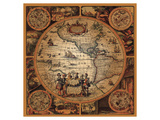

As a result, policymakers and planners should employ integrated and participatory urban and regional planning concepts for the effectiveness of urban areas sharing boundaries and administered by different regions. Furthermore, non-integrated urban planning trends between urban areas sharing borders amplify the proposal of conflicting and incompatible land uses.

The findings show lack of clear criteria to delineate urban boundaries in Ethiopian urban planning absence of regional planning leading to indistinct and overlapping boundary setting, which triggered challenges related to: rapid conversion of ecosystem service providing sites to settlements, conflicts over land administration, and land ownership insecurity. Temporal satellite images from 20 were used to examine land use/land cover changes around shared urban regions, and their proposed and existing land-uses were compared with the aid of Geographical Information System and ERDAS IMAGINE. It employed a case study approach, and the findings are conceptualized to the broader urbanization and urban planning trends, with particular relevance to any urban areas sharing borders. Therefore, this study examined the nature of shared urban boundaries and related social-ecological challenges. These allow us to explore the validity of the claims made.In Ethiopia, urban boundary roles are ineffective, leading to conflicting urban development, particularly on areas share borders and are administered by different regional governments. The literary texts chosen to exemplify the method are Mary Shelley’s Frankenstein and Lewis Carroll’s Through the Looking-Glass and What Alice Found There. It also argues for the value of layers of mapping and of comparative mapping of the same place both referentially and nonreferentially.
CARTOGRAPHICA II SERIES
It articulates an integrated visual–verbal method of interpretation that combines the close reading of spatial meanings and structures within a text with analysis of the map series generated out of that same text in an iterative structure. This second article seeks to make a larger case for new ways of working in the digital humanities and suggests that new methods of analysis and new tools are needed. The preceding article articulated the need to move beyond the mapping of literary texts onto geographic sites in the world and into the mapping of space relationally in nonreferential ways by means of literary topology. This is the second of two linked articles that aim to present new ways of mapping literature by means of digital tools for the twenty-first century. Elles nous permettent d’explorer la validité de nos hypothèses. Les œuvres littéraires choisies pour illustrer la méthode sont le Frankenstein de Mary Shelley et Through the Looking-Glass and What Alice Found There ( De l’autre côté du miroir) de Lewis Carroll.

Il défend par ailleurs la valeur des couches de la cartographie et de la cartographie comparative d’un même lieu de manière référentielle et non référentielle. Il propose une méthode d’interprétation visuelle-verbale intégrée, qui allie la lecture attentive des significations et des structures spatiales au sein d’un texte à l’analyse de la série de cartes générée par ce même texte dans une structure itérative. Cet article-ci cherche à trouver des débouchés pour les nouvelles méthodes de travail en sciences humaines numériques l’idée y est avancée que de nouvelles méthodes d’analyse et de nouveaux outils sont nécessaires. Le premier article exposait la nécessité de dépasser la cartographie des textes littéraires en fonction des sites géographiques du monde réel et d’adopter, au moyen d’une topologie littéraire, une cartographie relationnelle de l’espace qui soit non référentielle. Cet article est le second de deux textes interdépendants qui présentent de nouvelles façons de cartographier la littérature au moyen d’outils numériques adaptés au XXI e siècle.


 0 kommentar(er)
0 kommentar(er)
